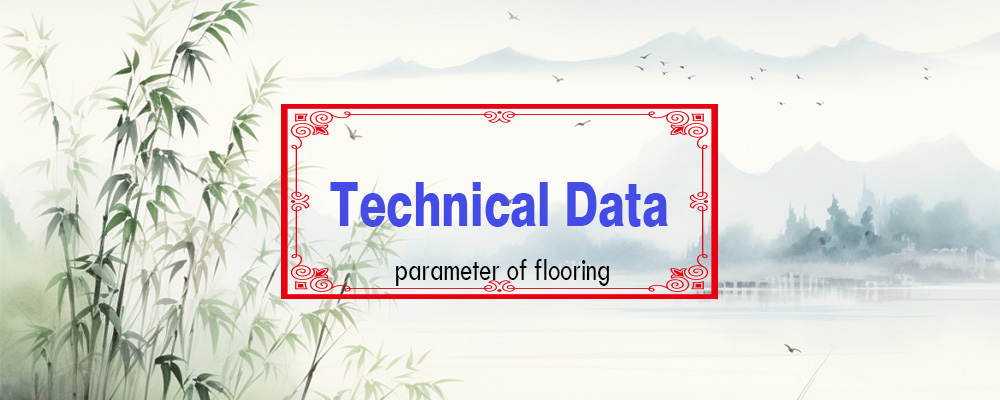Technical Data
Reasons to Buy Bamboo Flooring
Dec 3, 2025, 9:20 AM
Durability: Bamboo flooring is known for its durability and strength. It can withstand high traffic areas in your home, making it a practical choice for busy households. Properly maintained bamboo flooring can last for many years.
Aesthetic Appeal: Bamboo flooring offers a unique and natural look that can enhance the beauty of any room. It comes in a variety of styles, colors, and finishes to complement different interior design schemes.
Easy Maintenance: Bamboo flooring is relatively easy to maintain. Regular sweeping and occasional mopping with a damp cloth are usually sufficient to keep it clean. Additionally, bamboo flooring is resistant to moisture, making it suitable for areas prone to spills or humidity.
Versatility: Bamboo flooring can be installed in various settings, including living rooms, bedrooms, kitchens, and even bathrooms. It can also be installed over different types of subfloors, such as concrete or plywood.
Health Benefits: Our bamboo flooring is made with E-1 glue, which meets tough European standards for off-gassing. Some laminated products emit formaldehyde long after manufacture, but BothBest bamboo flooring in your home or business are virtually formaldehyde-free. Bamboo flooring is easy to clean and does not harbor these allergens, making it a better option for people with allergies or respiratory issues.
Cost-Effective: While the initial cost of Bamboo flooring may be slightly higher than some other flooring options, its durability and longevity can make it a cost-effective choice in the long run. You're less likely to need to replace bamboo flooring as frequently as other types of flooring.
Increases Home Value: Bamboo flooring is a desirable feature for many homebuyers due to its sustainability, durability, and aesthetic appeal. Installing bamboo flooring in your home can increase its resale value and make it more attractive to potential buyers.
Why Bamboo
Environmental Sustainability: Bamboo is one of the most sustainable materials on the planet. It is a rapidly renewable resource, with some species of bamboo growing up to 91 cm (36 inches) in a single day. Unlike trees, which can take decades to mature, bamboo reaches maturity in 3 to 5 years, making it an environmentally friendly alternative to traditional hardwoods. Many species of bamboo can grow two feet or more a day. When it's harvested, it need not be replanted, because it will grow a new shoot from its extensive root system. So bamboo renews itself readily, unlike hardwood trees, which, once cut, are gone forever. Bamboo is an endlessly renewable resource.
Carbon Sequestration: Bamboo plants absorb carbon dioxide (CO2) and release oxygen during photosynthesis. Bamboo's rapid growth rate and dense foliage make it an effective carbon sink, helping to reduce greenhouse gas emissions and mitigate climate change. Farmed bamboo stabilizes the earth with its roots, preventing erosion. It takes in greenhouse gasses and produces oxygen. In fact 35% more oxygen than an equivalent stands of trees. It can also provide habitat for birds and animals (though our bamboo is not preferred by pandas, and is therefore panda-safe).
Versatility: Bamboo is a versatile material that can be used in a wide range of applications, including flooring, furniture, construction materials, textiles, and even as a food source. Its strength, durability, and flexibility make it a valuable resource for various industries.
Durability and Strength: Despite being lightweight, bamboo is incredibly strong and durable. Bamboo fibers have a tensile strength comparable to steel, making it an ideal material for use in construction, furniture, and other applications that require strength and durability. Bamboo can withstand a great deal of use without damage. It's stronger even than oak, considered the most durable hardwood. When laminated, bamboo is nearly as strong as soft steel. Bamboo doesn't swell or shrink as hardwoods do, making it ideal for floors and furniture.
Renewable and Biodegradable: Bamboo is 100% biodegradable, meaning it can decompose naturally without causing harm to the environment. This makes bamboo products a more sustainable choice compared to synthetic materials that can take hundreds of years to decompose.
Efficiency: Parts of the bamboo that aren't suitable for flooring and furniture are used for many other products, like crafts, carpet, wallpaper etc. Though the bamboo is fast-growing and renewable, we're still committed to using each bamboo stem without waste.
Natural Pest Resistance: Bamboo has natural antibacterial and antifungal properties, making it resistant to pests and insects. This reduces the need for pesticides and chemical treatments, making bamboo products healthier for both the environment and humans.
Aesthetic Appeal: Bamboo has a natural, elegant appearance that adds a touch of beauty and sophistication to any space. The delicate grain of bamboo, whether natural or amber-toned, makes it a distinctive, elegant, and subtle material for flooring, veneer and fine furniture.
It's world-wide and historic.
Our bamboo grows in China, but the adaptable bamboo will grow most places on earth. Wherever it is native, bamboo has been integral to the economy and culture, used for cooking, beverages, paper, houses, and bridges. In China, it's known as the "friend of the people".


 皖公网安备 34180202000049号
皖公网安备 34180202000049号